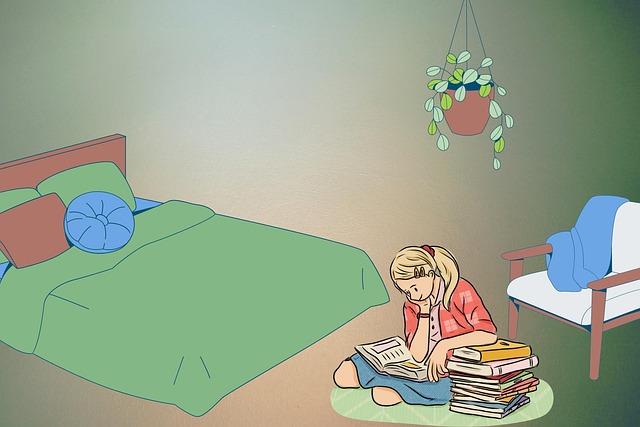Teaching children about personal safety and awareness is paramount in protecting them from potential harm. It involves implementing child safety tips within families and communities, educating kids on online hazards, recognizing dangers, and setting boundaries. Key aspects include child abuse prevention, empowering kids with knowledge of their rights, developing family safety plans, and fostering open communication. By integrating safety education into daily life and school curricula, we empower children to recognize and avoid harmful situations, enhancing efforts to prevent child injuries and ensure their security.
Teaching children personal safety and awareness skills is paramount in today’s complex world. This article offers comprehensive guidance on safeguarding our youngest members through four key areas: understanding foundational child safety principles, navigating online hazards, creating secure physical environments, and empowering kids to recognize and report potential threats. By implementing these child safety tips, we can contribute to robust family safety plans, enhancing protection against harm and promoting child abuse prevention while ensuring compliance with child protection laws.
Understanding Child Safety: The Foundation of Protection
Teaching children about personal safety and awareness is a fundamental aspect of protecting them from potential harm. It begins with establishing a solid foundation of understanding child safety tips and fostering a culture of safety within families and communities. By implementing effective child protection laws, parents and caregivers can create an environment where kids feel secure and empowered to make wise decisions. Safety education for children should encompass various topics, including online safety, recognizing potential dangers, and developing healthy boundaries.
Child abuse prevention is a critical component of ensuring child security. Educating young minds about their rights and the importance of seeking help from trusted adults can be life-saving. Family safety plans play a pivotal role in this process, as they provide a structured approach to dealing with emergencies or uncertain situations. Through regular discussions and activities focused on these plans, children become more aware and prepared, contributing significantly to their overall well-being and security.
Online Hazards and How to Navigate Them Safely
Teaching children about online hazards is an essential part of their personal safety and awareness education. In today’s digital era, kids spend a significant amount of time online, whether it’s through gaming, social media, or educational platforms. This exposure comes with risks, including cyberbullying, online predators, and the potential for sharing too much personal information. To protect children from harm, parents and caregivers must educate them about creating strong passwords, understanding privacy settings, and recognizing suspicious behavior or communication. Regular conversations about online safety can help foster a culture of caution and empower kids to make smart choices while navigating the digital world.
One crucial step is to establish open lines of communication where children feel comfortable discussing their online experiences. Parents should model safe internet usage themselves and set clear rules about screen time and appropriate content. Encouraging children to report any unsettling interactions or content immediately is vital. Additionally, teaching them to verify the authenticity of information they find online can prevent the spread of misinformation and potential scams. By providing these child safety tips, we contribute to creating a safer digital environment, ensuring that kids are protected from harm while exploring the wonders of the internet.
Creating a Safe Environment: From Home to School
Creating a safe environment is paramount in safeguarding our children from harm. This begins at home where parents and caregivers play a crucial role in instilling basic safety tips, such as teaching kids about potential dangers, establishing clear boundaries, and fostering open communication about personal space and consent. Regular family discussions about child abuse prevention, online safety for kids, and the importance of reporting suspicious activities can empower children to recognize and avoid harmful situations.
The environment extends beyond home, especially with school serving as a significant part of a child’s daily life. Schools should complement parental efforts by incorporating safety education for children into their curricula. This includes teaching child protection laws, helping kids identify potential risks, and promoting reporting mechanisms for suspicious behaviors or incidents. By fostering a culture of safety, both at home and in school, we can ensure that children are equipped with the knowledge and confidence to navigate their world securely, ultimately preventing child injuries and safeguarding their overall well-being.
Empowering Kids: Teaching them to Recognize and Report
Teaching children to recognize and report potential dangers is a crucial aspect of empowering them with personal safety skills. By implementing effective child safety tips, such as teaching them about online safety for kids and helping them understand their rights under child protection laws, we can ensure that they feel confident in reporting suspicious activities or individuals. Fostering safe environments starts with education; it equips children with the knowledge to navigate potential hazards and take proactive measures to protect themselves from harm.
Incorporating safety education for children into daily conversations and activities allows us to create a culture of awareness and responsibility. This includes discussing different scenarios, like strangers offering help or unexpected invitations, and teaching them simple yet powerful phrases to assert their boundaries. Additionally, developing family safety plans can provide a sense of security, equipping kids with the tools to recognize and respond appropriately in emergencies, thus enhancing child injury prevention efforts.
Teaching children personal safety and awareness skills is an essential step in protecting them from potential harm. By understanding the online hazards that exist and creating safe environments both at home and at school, we can empower kids to recognize and report any suspicious activity. Implementing comprehensive child safety tips, including regular family safety plan discussions, helps ensure that children are equipped with the knowledge to avoid dangerous situations and maintain their well-being. Remember, fostering a culture of safety is crucial in preventing child abuse and ensuring every child’s security.
